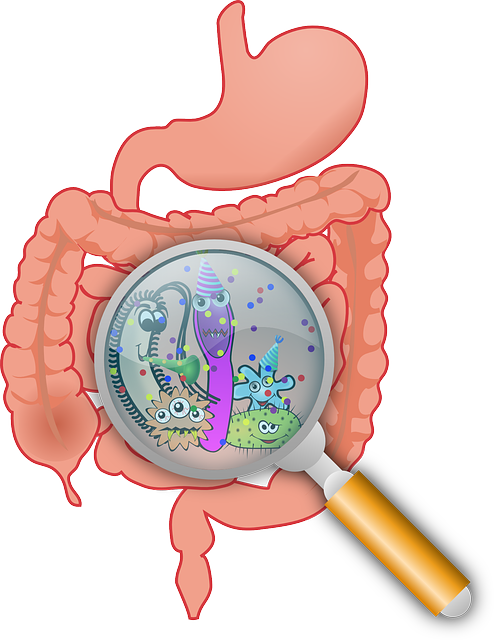Is Akkermansia the Next BIG breakthrough?
Let’s dive in with a little science and the step back and look at Digestion from a 360 perspective.
The human gut is inhabited by trillions of microorganisms, collectively called the gut microbiome.
The Scientific understanding of the gut microbiome in human health and disease has increased exponentially over the last two decades, with novel bacterial strains emerging as key players in the gut’s ecosystem. One specific strain gaining significant interest from the scientific and medical community is Akkermansia muciniphila.
What is Akkermansia Muciniphila?
Akkermansia muciniphila is a novel probiotic strain discovered in 2004 when scientists at Wageningen University of the Netherlands were searching for a new mucin‐degrading microbe. Research has rapidly expanded in the last several years, leading to the identification of how this keystone bacterial strain functions in the gut to impact health throughout the body.
Akkermansia strengthens the gut lining, improves digestive health, and helps support a healthy weight. In a healthy gut, Akkermansia accounts for up to 4% of intestinal bacteria. Unfortunately, many people are low in Akkermansia or have no detectable levels at all. The lack of or decreased levels has been linked to the prevalence of multiple metabolic diseases.
Here’s How Akkermansia Works
The lining of the intestines is made up of epithelial cells, i.e., the cells that cover the surfaces of bodily organs. These epithelial cells are covered in a slimy mucus layer rich in protein called mucin. Akkermansia muciniphila was actually named after the microbial ecologist Antoon DL Akkermans, and muciniphila translates to “preferring mucin.” This is because the Akkermansia strain loves mucin and uses it for energy. The more mucin Akkermansia eats, the more it encourages the epithelial cells to make additional mucin. This additional “mucin making” strengthens the intestinal wall, protects against pathogens and prevents leaky gut and prevents toxics from entering circulation.
Low Levels of Akkermansia
Reduction in the abundance of Akkermansia has been implicated in the progression of metabolic, autoimmune, and neurodegenerative diseases. Akkermansia plays a role in the regulation of body weight in humans. Preliminary research shows Akkermansia’s potential benefit includes inflammatory bowel disease, obesity, and the chronic inflammation associated with type 2 diabetes. There is also growing interest in dermatology and immune-related diseases . This makes sense as we have often talked about the skin or outer barrier being a reflection of the Gut – Inside barrier. We should also include brain health in this discussion.
What Causes Low Akkermansia Muciniphila?
Unfortunately, Akkermansia levels tend to decrease with age, as well as with repeated usage of antibiotics and the prevalence of a Western diet that is low in fiber and polyphenols.
How to Test for Akkermansia Muciniphila levels
How do you find out if you have low levels? One of the best tests available is the GI Map. It uses what is called PCR technology and it is what I use to check my GUT health and what I offer my patients. It is an easy at home test that is delivered to your door. You collect a sample and call for a pick up. Results are usually back within 2-3 weeks.
How to Boost Akkermansia Muciniphila Levels With Nutrition
Unfortunately, Akkermansia is not found in food, however it does feed on fiber. While there are many types of fiber-containing foods, research shows that the ones that best support Akkermansia growth are polyphenol-rich foods and prebiotic fibers.
Polyphenols are found in green tea (catechin), grape seed, cranberry, curcumin, and pomegranate (ellagic acid) have been shown to support a healthy environment so that Akkermansia can thrive in the gut microbiome. There are some nice formulas available if you are struggling to get adequate polyphenols into your diet.
I like Comprehensive Core from Mother Earth Labs. It comes in capsule and liquid form.
Prebiotic fibers are nondigestible carbohydrates that can help promote the abundance of beneficial bacteria in the gut. The most common prebiotic foods are garlic, chicory root, onions, Jerusalem artichokes, dandelion greens, arugula and asparagus.
Is Akkermansia the next Big Breakthrough?
Supplements: There is a new company called Pendulum that is offering Akkermansia as a probiotic supplement. It is getting a lot of press with some big names talking about it however, before you jump in to buy this product I would like you to think big picture:
- Assess stress levels: Digestion does not work well if one is stressed out.
- Assess Upper Digestion: Can I digest and absorb what I am taking?
- Test: Don’t guess. Find out if your Akkermansia levels are low? As I mentioned we offer the GI Map as an option.
- If a test comes back with low levels of Akkermansia we also look at the rest of the GI map to assess how the dots are connected and the solution would often times be multifactorial.
- Assess your diet? Taking a supplement does not fix a poor diet.
- If you have taken an antibiotic within the last 12 months you might want to consider a muti-strain probiotics. I like Megaspore, Prosynbiotic, and BioDolph 7.
- If you test for low levels and want to give Akkermansia plus diet a try because you want to be a test case …then please re test after a 12 week period to check to see if it is working for you.
Is Akkermansia the next Big Breakthrough?
More research with Akkermansia in human clinical trials is needed. Clinicals trails to date have been on mice and show promise however there is no evidence to support the claims. The current scientific evidence collectively points to Akkermansia as a logical next-generation solution for strengthening the microbiome to improve human health.
I hope you enjoyed this article ? Have a healthy week, stay cool and hydrated.
Dr Pia











